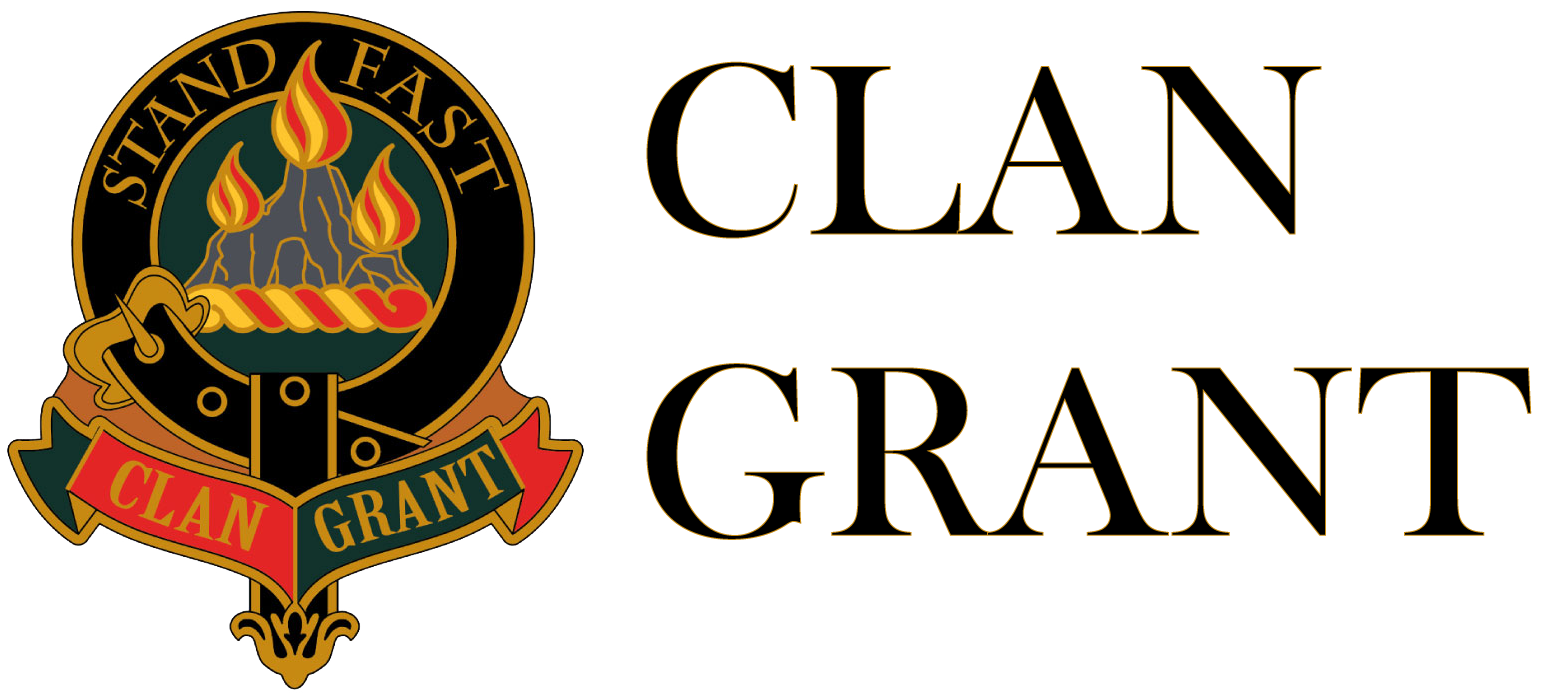
CLAN GRANT TARTAN
In 1725, the Government decided to raise six companies from the non-Jacobite branches of the clans: – Grant of Freuchie, Campbell, Fraser and Munro, therefore taking advantage of the partisan nature and warrior instincts of the highlanders. These men were authorised to wear the kilt and to bear arms, thus it was not difficult to find recruits.
The Army was almost certainly responsible for the general re-acceptance of tartan as a means of identification. The early Highland Independent Companies, raised ‘to Keep Watch upon the Braes’ after the restoration of the monarchy in 1660, seem to have worn their own tartans with no regulation.

The first Highland Regiments raised at the end of the 17th Century wore the standard uniform of the line. However an effort seems to have been made to standardise the tartans worn after 1725. This was certainly the case when these same companies were regimented in 1739 into what is now the Black Watch.
The basic military tartan (shown on the left) with its familiar Green and Black sett is still worn by the Black Watch today. The ‘Black Watch’ tartan is also known as ‘Government’ or ‘42nd.’ It is worn as a clan tartan by Clan Campbell (usually in lighter tones today) and by other clans such as the Grants, Munros and Sutherlands.
An argument has been put forward for the Black Watch tartan having originated as the Clan Campbell tartan because of the large number of Campbells serving in its ranks. In fact the reverse is almost certainly true: the regimental tartan was adopted by the Campbells as theirs because so many Campbells were already accustomed to wearing it when the idea of wearing clan tartans became general. This explanation would account for its use by the other clans mentioned, all of whom were involved in the formation of the Black Watch as well as the Campbells.
Many later Highland regiments also used the same sett, either in its original form or with a slight differentiation, usually in the form of the addition of coloured over-stripes. The use of these modified setts by the regiments led to their adoption as clan tartans by respectively the Forbes (white over-stripe,) the Gordons (yellow over-stripe,) the MacKenzies and, the Grants and the Robertsons as ‘hunting’ tartans.
The infamous ‘Grant Fencibles’ had been raised for service only in Scotland. They mutinied at the thought of being sent to serve overseas and had four men condemned to death. They were forced to draw lots and two men were shot on 16th July 1795.

The 1886 Grant Tartan



Red Grant Tartan

CLAN GRANT TARTAN
In 1725, the Government decided to raise six companies from the non-Jacobite branches of the clans: – Grant of Freuchie, Campbell, Fraser and Munro, therefore taking advantage of the partisan nature and warrior instincts of the highlanders. These men were authorised to wear the kilt and to bear arms, thus it was not difficult to find recruits.
The Army was almost certainly responsible for the general re-acceptance of tartan as a means of identification. The early Highland Independent Companies, raised ‘to Keep Watch upon the Braes’ after the restoration of the monarchy in 1660, seem to have worn their own tartans with no regulation.

The first Highland Regiments raised at the end of the 17th Century wore the standard uniform of the line. However an effort seems to have been made to standardise the tartans worn after 1725. This was certainly the case when these same companies were regimented in 1739 into what is now the Black Watch.
The basic military tartan (shown on the left) with its familiar Green and Black sett is still worn by the Black Watch today. The ‘Black Watch’ tartan is also known as ‘Government’ or ‘42nd.’ It is worn as a clan tartan by Clan Campbell (usually in lighter tones today) and by other clans such as the Grants, Munros and Sutherlands.
An argument has been put forward for the Black Watch tartan having originated as the Clan Campbell tartan because of the large number of Campbells serving in its ranks. In fact the reverse is almost certainly true: the regimental tartan was adopted by the Campbells as theirs because so many Campbells were already accustomed to wearing it when the idea of wearing clan tartans became general. This explanation would account for its use by the other clans mentioned, all of whom were involved in the formation of the Black Watch as well as the Campbells.
Many later Highland regiments also used the same sett, either in its original form or with a slight differentiation, usually in the form of the addition of coloured over-stripes. The use of these modified setts by the regiments led to their adoption as clan tartans by respectively the Forbes (white over-stripe,) the Gordons (yellow over-stripe,) the MacKenzies and, the Grants and the Robertsons as ‘hunting’ tartans.
The infamous ‘Grant Fencibles’ had been raised for service only in Scotland. They mutinied at the thought of being sent to serve overseas and had four men condemned to death. They were forced to draw lots and two men were shot on 16th July 1795.

The 1886 Grant Tartan



Red Grant Tartan

